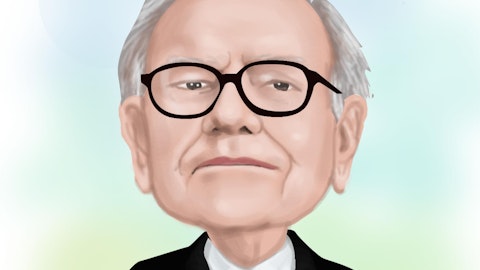- It is human to err: At the risk of stating the obvious, Warren Buffett and 3G’s key operators are human, and are prone to not only making mistakes, like the rest of us, but also to have blind spots in investing that hurt them. In fact, Buffett has been open about his mistakes, and how much they have cost him and Berkshire Hathaway shareholders. He has also been candid about his blind spots, which include an unwillingness to invest in businesses that he does not understand, a sphere that only grows as he gets older and the economy changes, and an excessive trust in the managers of the companies that he invests in. While he is, for the most part, an excellent judge of character, his investments in Wells Fargo, Coca Cola and Kraft-Heinz show that he is not perfect. The fault, in my view, is not with Buffett, but with the legions of investors, analysts and journalists who treat him as an investment deity, quoting his words as gospel and tarring and feathering anyone who dares to question them.
- Stocks are not bonds: In my data posts, I looked at how companies in the United States have moved away from dividends to buybacks, as a way of returning cash. That trend, though, has not been universally welcomed by investors, and there remains a significant subset of investors, with strategies built around buying stocks with big dividends. One reason that stocks like Kraft Heinz become attractive conservative value investors is because they offer high dividend yields, often much higher than what you could earn investing in treasury or even safe corporate bonds. In effect, the rationale that investors use is that by buying these shares, they are in effect getting a bond (with the dividends replacing coupons), with price appreciation. From the Dogs of the Dow to screening based upon dividend yields, the underlying premise is that investors can count more on dividends than on buybacks. While it is true that dividends are stickier than buybacks, with many companies maintaining or increasing dividends over time, these dividend-based strategies become delusional when they treat dividends as obligated payments, rather than expected ones. After all, much as companies do not like to cut dividends, they are not contractually obligated to pay dividends. In fact, when a stock carries a dividend yield that looks too good to be true, it is usually almost always an unsustainable dividends, and it is only a question of time before dividends are cut (or even stopped) or the company drives itself into a financial ditch.
- Brand Names last a long time, but nothing lasts forever: A major lodestone of conventional value investing is that while technology, cost efficiencies and new products are all competitive advantages that can generate value, it is brand name that is the moat that has the most staying power. Again, that statement reflects a truth, which is that brand names last long, often stretching over decades, but even brand name benefits fade, as customers change and companies seek to become global. The troubles at Kraft-Heinz are part of a much bigger story, where some of the most recognized and valued brand names of the twentieth century, from Coca Cola to McDonalds, are finding that their magic fading. Using my life cycle terminology, these companies are aging and no amount of financial engineering or strategic repositioning is going to make them young again.
- Cost cutting can take you far, but no further: For the last few decades, we have cut a great deal of slack for those who use cost cutting as their pathway for creating value, with many leveraged buyouts and restructurings built almost entirely on its promise. Don’t get me wrong! In firms with significant cost inefficiencies and bloat, cost cutting can deliver significant gains in profits, but even with these firms, those gains will be time limited, since there is only so much fat to cut out. Worse, there are firms that find themselves in trouble for a myriad of reasons that have little to do with cost inefficiencies and cutting costs as these firms is a recipe for disaster. It is true that 3G did a masterful job, cutting costs and increasing margins at Mexico’s Grupo Modelo, the Mexican brewer that they acquired through Inbev, but that was because Modelo’s problems lent themselves to a cost-cutting solution. It may even have worked at Kraft-Heinz initially, but at this point, the company’s problems may have little to do with cost inefficiencies, and much to do with a stable of products that is less appealing to customers than it used to be, and cost cutting is the wrong medicine for whatever ails them.
The Perils of Investing Idol Worship: The Kraft Heinz Co (KHC) Lessons!
Published on March 1, 2019 at 3:14 pm by in Hedge Funds, News, Stock Analysis
AI Fire Sale: Insider Monkey’s #1 AI Stock Pick Is On A Steep Discount
Published on April 11, 2024 at by
Artificial intelligence is the greatest investment opportunity of our lifetime. The time to invest in groundbreaking AI is now, and this stock is a steal!
The whispers are turning into roars.
Artificial intelligence isn’t science fiction anymore.
It’s the revolution reshaping every industry on the planet.
From driverless cars to medical breakthroughs, AI is on the cusp of a global explosion, and savvy investors stand to reap the rewards.
Here’s why this is the prime moment to jump on the AI bandwagon:
Exponential Growth on the Horizon: Forget linear growth – AI is poised for a hockey stick trajectory.
Imagine every sector, from healthcare to finance, infused with superhuman intelligence.
We’re talking disease prediction, hyper-personalized marketing, and automated logistics that streamline everything.
This isn’t a maybe – it’s an inevitability.
Early investors will be the ones positioned to ride the wave of this technological tsunami.
Ground Floor Opportunity: Remember the early days of the internet?
Those who saw the potential of tech giants back then are sitting pretty today.
AI is at a similar inflection point.
We’re not talking about established players – we’re talking about nimble startups with groundbreaking ideas and the potential to become the next Google or Amazon.
This is your chance to get in before the rockets take off!
Disruption is the New Name of the Game: Let’s face it, complacency breeds stagnation.
AI is the ultimate disruptor, and it’s shaking the foundations of traditional industries.
The companies that embrace AI will thrive, while the dinosaurs clinging to outdated methods will be left in the dust.
As an investor, you want to be on the side of the winners, and AI is the winning ticket.
The Talent Pool is Overflowing: The world’s brightest minds are flocking to AI.
From computer scientists to mathematicians, the next generation of innovators is pouring its energy into this field.
This influx of talent guarantees a constant stream of groundbreaking ideas and rapid advancements.
By investing in AI, you’re essentially backing the future.
The future is powered by artificial intelligence, and the time to invest is NOW.
Don’t be a spectator in this technological revolution.
Dive into the AI gold rush and watch your portfolio soar alongside the brightest minds of our generation.
This isn’t just about making money – it’s about being part of the future.
So, buckle up and get ready for the ride of your investment life!
Act Now and Unlock a Potential 10,000% Return: This AI Stock is a Diamond in the Rough (But Our Help is Key!)
The AI revolution is upon us, and savvy investors stand to make a fortune.
But with so many choices, how do you find the hidden gem – the company poised for explosive growth?
That’s where our expertise comes in.
We’ve got the answer, but there’s a twist…
Imagine an AI company so groundbreaking, so far ahead of the curve, that even if its stock price quadrupled today, it would still be considered ridiculously cheap.
That’s the potential you’re looking at. This isn’t just about a decent return – we’re talking about a 10,000% gain over the next decade!
Our research team has identified a hidden gem – an AI company with cutting-edge technology, massive potential, and a current stock price that screams opportunity.
This company boasts the most advanced technology in the AI sector, putting them leagues ahead of competitors.
It’s like having a race car on a go-kart track.
They have a strong possibility of cornering entire markets, becoming the undisputed leader in their field.
Here’s the catch (it’s a good one): To uncover this sleeping giant, you’ll need our exclusive intel.
We want to make sure none of our valued readers miss out on this groundbreaking opportunity!
That’s why we’re slashing the price of our Premium Readership Newsletter by a whopping 75%.
For a ridiculously low price of just $24, you can unlock a year’s worth of in-depth investment research and exclusive insights – that’s less than a single restaurant meal!
Here’s why this is a deal you can’t afford to pass up:
- The Name of the Game-Changing AI Stock: Our in-depth report dives deep into our #1 AI stock’s groundbreaking technology and massive growth potential.
- Ad-Free Browsing: Enjoy a year of investment research free from distracting banner and pop-up ads, allowing you to focus on uncovering the next big opportunity.
- Lifetime Money-Back Guarantee: If you’re not absolutely satisfied with our service, we’ll provide a full refund ANYTIME, no questions asked.
Space is Limited! Only 1000 spots are available for this exclusive offer. Don’t let this chance slip away – subscribe to our Premium Readership Newsletter today and unlock the potential for a life-changing investment.
Here’s what to do next:
- Head over to our website and subscribe to our Premium Readership Newsletter for just $24.
- Enjoy a year of ad-free browsing, exclusive access to our in-depth report on the revolutionary AI company, and the upcoming issues of our Premium Readership Newsletter over the next 12 months.
- Sit back, relax, and know that you’re backed by our ironclad lifetime money-back guarantee.
Don’t miss out on this incredible opportunity! Subscribe now and take control of your AI investment future!
50-year Wall Street Insider Names #1 stock for AI “Tidal Wave”
Published on April 1, 2024 at by
Should I put my money in Artificial Intelligence?
Here to answer that for us… and give away his No. 1 free AI recommendation… is 50-year Wall Street titan, Marc Chaikin.
Marc’s been a trader, stockbroker, and analyst. He was the head of the options department at a major brokerage firm and is a sought-after expert for CNBC, Fox Business, Barron’s, and Yahoo! Finance…
But what Marc’s most known for is his award-winning stock-rating system. Which determines whether a stock could shoot sky-high in the next three to six months… or come crashing down.
That’s why Marc’s work appears in every Bloomberg and Reuters terminal on the planet…
And is still used by hundreds of banks, hedge funds, and brokerages to track the billions of dollars flowing in and out of stocks each day.
He’s used this system to survive nine bear markets… create three new indices for the Nasdaq… and even predict the brutal bear market of 2022, 90 days in advance.
So you can see why CNBC’s Jim Cramer has said he’s learned to never bet against Marc.





